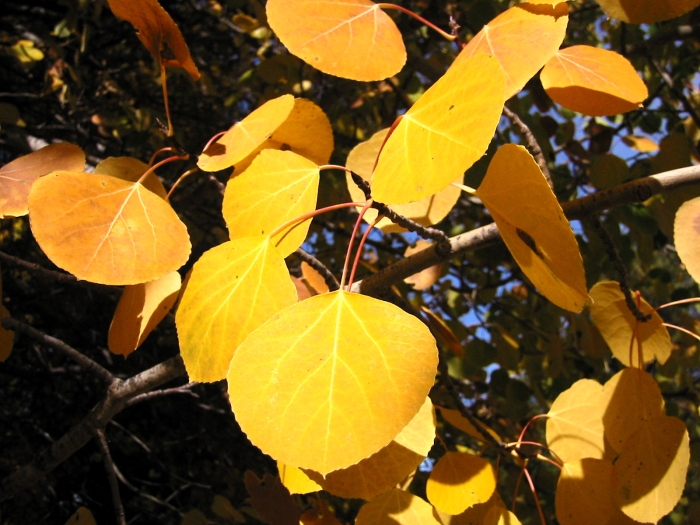Quaking Aspen
(Populus tremuloides)
Quaking Aspen (Populus tremuloides)
/
/

Walter Siegmund (talk)
CC BY 2.5
















































































Estimated Native Range
Summary
Quaking Aspen is valued for its rapid growth and striking fall coloration. It is used in reforestation projects, for erosion control, and as a pioneer species in disturbed areas. It is also popular in large gardens and public landscapes for its aesthetic appeal. This tree requires full sun and can tolerate a range of soil moisture levels, from high to moderate, but prefers well-drained soils. It is not drought-tolerant and may require additional watering in dry climates. While it has few serious pest or disease problems, it can be susceptible to aspen leaf spot and canker diseases. Additionally, its aggressive root system can cause problems for urban infrastructure if not managed properly.CC BY-SA 4.0
Plant Description
- Plant Type: Tree
- Height: 20-50 feet
- Width: 10-30 feet
- Growth Rate: Rapid
- Flower Color: N/A
- Flowering Season: Spring
- Leaf Retention: Deciduous
Growth Requirements
- Sun: Full Sun
- Water: Medium
- Drainage: Fast, Medium, Slow
Common Uses
Bee Garden, Bird Garden, Butterfly Garden, Erosion Control, Water Garden
Natural Habitat
Cool, high elevation forests, and moist but well-drained sandy or gravelly soils along rivers and mountain slopes
Other Names
Common Names: Aspen Poplar , Quiver-Leaf , Trembling Aspen , American Aspen , Mountain Aspen , Golden Aspen , Faux-Tremble , Peuplier Faux-Tremble , Peuplier Tremble D’Amérique , Tremble
Scientific Names: Populus tremuloides , Populus tremuloides var. vancouveriana , Populus tremuloides var. aurea , Populus graeca , Populus atheniensis , Populus tremuloides var. magnifica , Populus aurea , Populus hispida , Populus tremuloides f. pendula , Populus tremuloides var. intermedia
GBIF Accepted Name: Populus tremuloides Michx.